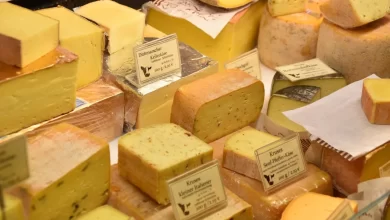Cardamom is a spice that is widely used in cooking and traditional medicine. It is native to the Indian subcontinent and is known for its strong, sweet, and pungent flavour with a hint of citrus. Cardamom is a member of the ginger family and is available in two main varieties – green and black. In traditional medicine, cardamom has been used to treat a range of ailments, including digestive issues, respiratory problems, and even depression. Cardamom is a versatile spice that can be used in many different ways, from flavouring curries and stews to adding a hint of sweetness to desserts and beverages.
- Cardamom is one of the oldest spices in the world and has been used for thousands of years for its culinary and medicinal properties.
- Cardamom has a long history of use in traditional medicine and is still used in many natural remedies today.
- In ancient times, cardamom was considered a symbol of luxury and was often used as a gift for royalty.
- The two main types of cardamom are green and black. Green cardamom is the more common type and is used in both sweet and savoury dishes, while black cardamom has a smoky flavour and is used more commonly in savoury dishes.
- In ancient Egypt, cardamom was used as toothpaste, and the Greeks and Romans used it as a perfume and flavouring for wine.
- The word “cardamom” comes from the Greek word “kardamomon,” which means “cress with seeds.”
- Cardamom is native to India and is now grown in many tropical regions around the world, including Guatemala, Tanzania, and Sri Lanka.
- Cardamom is a rich source of essential oils, including cineole, limonene, and terpinene, which give it its distinct aroma and flavour.
- Cardamom is also a rich source of antioxidants, which can help to protect against cell damage and inflammation in the body.
- In traditional medicine, cardamom has been used to treat a range of ailments, including digestive issues, respiratory problems, and even depression.
- Cardamom is widely used in Indian and Middle Eastern cuisine and is often used to flavour dishes such as biryanis, curries, and chai tea.
- India is the biggest producer, consumer and exporter of small cardamom.
- In Scandinavian cuisine, cardamom is commonly used in baked goods such as bread and pastries.
- In Ayurvedic medicine, cardamom is believed to have a warming effect on the body and is often used in remedies to treat colds, coughs, and other respiratory issues.
- Cardamom has a unique flavour profile that pairs well with many other spices, including cinnamon, ginger, and cloves, making it a versatile ingredient in many different types of cuisine.
- In 2022, the cardamom Market was valued at around USD 39011.66 million and is estimated to grow to USD 51336.68315 by 2029.
- Cardamom is one of the most expensive spices in the world, second only to saffron.
- Besides its culinary and medicinal uses, cardamom has also been used to make perfumes, cosmetics, and other beauty products.
- Cardamom oil is a popular essential oil that is used in aromatherapy to promote relaxation and reduce stress.
- In some cultures, cardamom is also used as a natural breath freshener and is added to chewing gum and other oral care products.
- Cardamom is an important ingredient in many spice blends, including garam masala, ras el hanout, and baharat.
- The flavour and aroma of cardamom come from the volatile oils found in the seeds. To get the most flavour and aroma from cardamom, it’s best to grind the seeds just before using them.
- Cardamom is also used in traditional medicine to treat bad breath, teeth and gum infections and to improve overall oral health.
- Cardamom is an important crop for many small farmers in developing countries, providing a source of income and employment for many people around the world.
- Cardamom is used in traditional Chinese medicine to treat digestive disorders and improve blood circulation.
- Cardamom is a natural source of manganese, an important mineral for bone health, wound healing, and metabolism.
- In addition to its use in culinary and medicinal applications, cardamom has also been used for spiritual and religious purposes in some cultures.
- In Hinduism, cardamom is used as a sacred offering to the gods during religious ceremonies.
- The use of cardamom is not limited to human consumption; it is also used in some pet foods as a flavouring and digestive aid.
- Cardamom is a popular flavouring for coffee and is often added to coffee beans before roasting to give them a unique flavour and aroma.
- Cardamom has a unique ability to enhance the flavour of both sweet and savoury dishes and is often used to balance the flavours of other ingredients.
- Cardamom is an important ingredient in many traditional spice blends, including the Indian spice blend masala chai and the Middle Eastern spice blend baharat.
- In Scandinavian countries, cardamom is a popular flavouring for pastries and baked goods such as cinnamon buns and gingerbread cookies.
- In addition to its use as a flavouring agent, cardamom is also used as a natural food preservative due to its antimicrobial properties.
- Cardamom pods are harvested by hand and require careful processing to remove the outer husk and extract the seeds.
- The demand for cardamom has increased in recent years due to its growing popularity in the food and beverage industry, leading to concerns about sustainability and fair labour practices in some cardamom-growing regions.





